Revelations on Revelation (Part II)
Although much of the evangelical dispensationalist view of the End Times does come from the Book of Revelation, two of the most widely known elements come from other sources: the rapture and the tribulation.
Now is a good point to mention that rather than being a well-defined subcategory of evangelicalism like Baptist or Pentecostal, dispensationalism consists of a set of beliefs that are shared by up to 65% of evangelicals as a whole. It’s a theological term; most people who subscribe to these beliefs consider themselves “evangelical,” just like those who don’t. In an attempt to tame the sprawl at least a little, I will not get into other categories of evangelical beliefs in this series.
In this post, I’ll look at how dispensationalism draws the concepts of the rapture and the tribulation from the Bible and where it places them in a timeline of Revelation, as well as how who gets raptured is decided. I should qualify that there is no one canonical version of the entire narrative as interpreted by dispensationalism, so what I’ll provide is my best attempt at a coherent assembly of the most common views.
Then in Parts III, IV, V, and VI, I’ll explore some individual experiences with dispensationalist beliefs before spending the majority of the time exploring pop culture based on them. And finally, in Part VII, I’ll look at supposed signs that the End Times are coming.
So, as the 1974 comic There’s a New World Coming tells us, get ready for the Great Snatch:
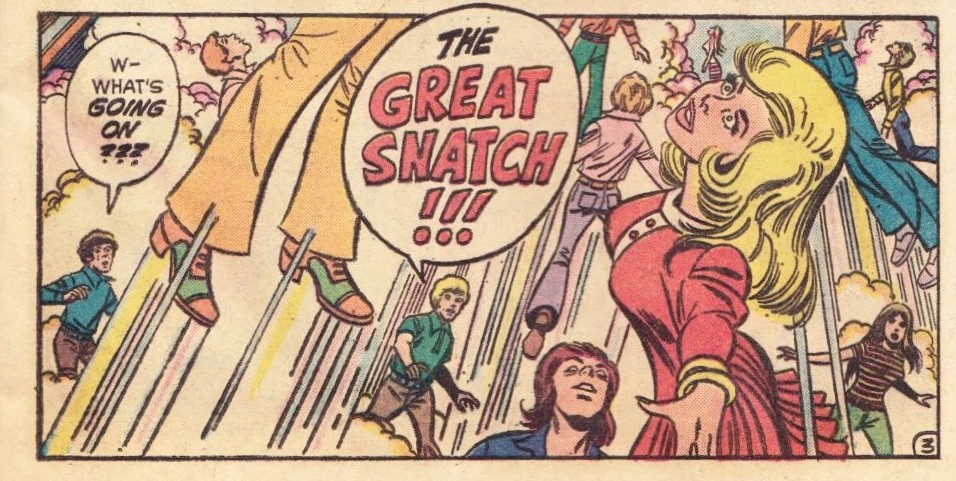
Table of Contents
The rapture
The image of Jesus suddenly taking believers away to Heaven comes from a verse halfway through the New Testament, in 1 Thessalonians. It is part of the apostle Paul’s speech to a group of worshippers in a church in ancient Greece.
Paul tells them that when Jesus returns, all believers, dead or alive, will be “caught up” and rise into the clouds, where they will meet Jesus and be with him forever. The term “rapture” itself comes from another translation of the word that appears as “caught up” in the New International Version.
Another passage sometimes seen as referring to the rapture is in the Gospel of Matthew. Jesus is hanging out with his disciples when they ask him about what will happen when he returns. He reveals that some people will be “taken” and some will be “left.”
Whether this one relates to the rapture is contested, however, even among dispensationalists, which is a reminder that any religious belief system could be seen as a bunch of schisms over the interpretation of sacred texts in a trenchcoat.
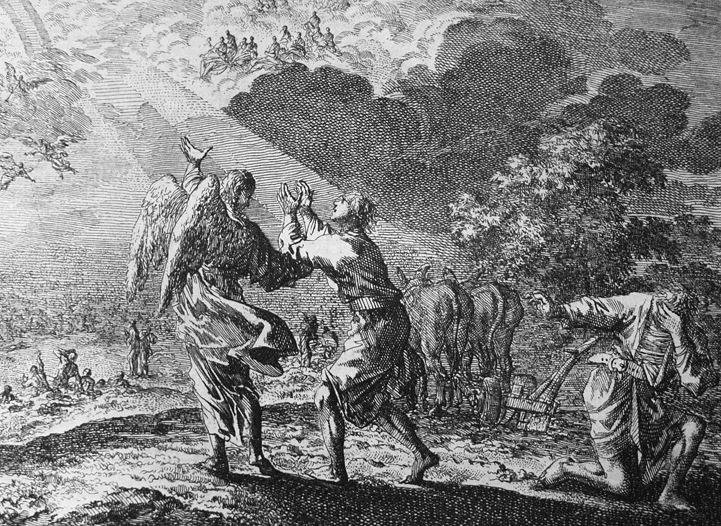
Indeed, other Christian denominations see these verses merely as different perspectives on events that take place elsewhere in the Bible.
Even within the category of futurist beliefs, which describes those that see Revelation as foretelling future events—and which is a category that dispensationalism belongs to—these scenes are mostly connected to the Last Judgement.
Dispensationalism, however, sees the rapture as its own separate event. Since it also holds that when people die, they wait for the events of the End Times to be judged, rather than immediately being sent to their eternal destination, the catching up of dead believers as well as living ones doesn’t seem to conflict with any of their other beliefs.
I’ll discuss the timing of the rapture shortly, after I talk about the next concept: the tribulation.
The tribulation
In the same speech where the rapture content appears, Paul also says that Jesus will return suddenly, “like a thief in the night,” and during a period of peace and safety, destruction will come and nobody will be able to escape.
Jesus says something similar in the Gospel of Matthew: when he returns, there will be “great distress,” unlike anything in the history or future of the world. Similar to the term “rapture,” the word “tribulation” is another translation for the word “distress” used here.
Most futurist beliefs, including dispensationalism this time, map the tribulation onto the period during Revelation when all the death and destruction is visited on the world before the Battle of Armageddon.
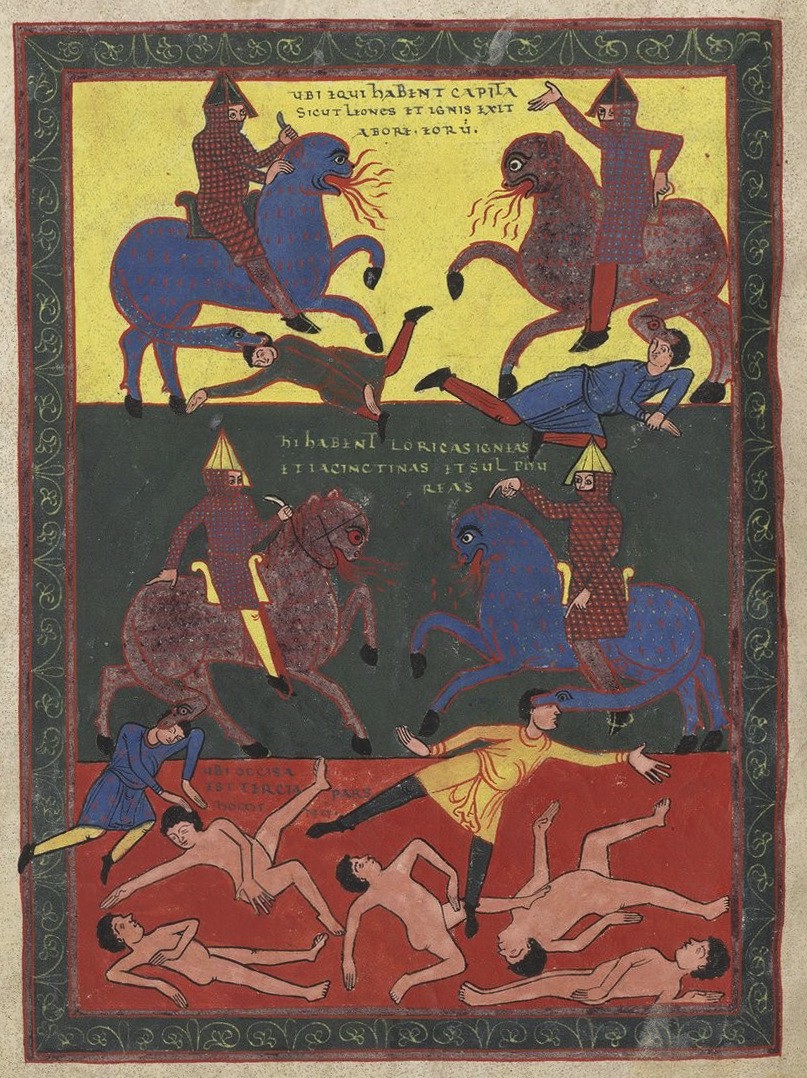
That said, in dispensationalism, what formally counts as the tribulation doesn’t start right away once the events of Revelation begin.
By way of explaining that, and more, I’ll now provide an overview of how dispensationalists see the tribulation timeline—and I’ll even include a diagram at the end. So, let’s get caught up in Revelation again and visit the Throne of Heaven in time for the opening of the seals.
When the Lamb opens the first seal, the first horseman, the one on the white horse with the crown and bow, rides out seeking conquest. In this view, he is actually the Beast, and “conquest” in this case is gaining authority based on his evil powers of persuasion, which the Dragon increases when they encounter each other later on.
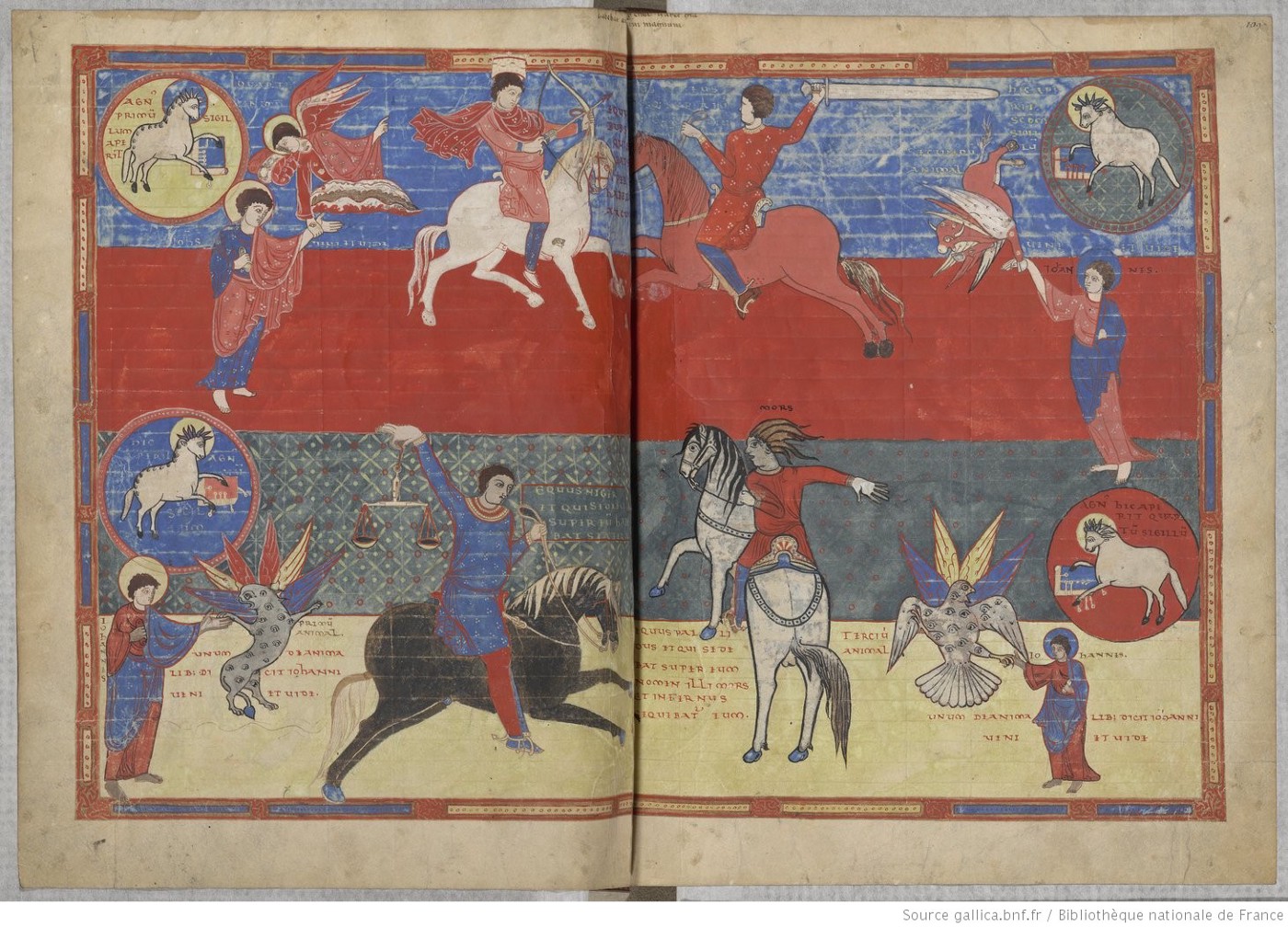
The idea that the Beast shows up right after the rapture, or is even already doing his evil work soon before it, mostly comes from the discussion of the Man of Lawlessness in 2 Thessalonians, who is seen as being the same character as the Beast and Antichrist.
Next, based on an interpretation of the Book of Daniel, the Beast negotiates a peace treaty involving Israel, which, whatever else it consists of, also allows Jews to rebuild the Temple of Jerusalem.
No matter, of course, that there has been a Muslim shrine on top of the ruins of the Temple of Jerusalem for over 1000 years, administration of the entire Temple Mount site shared with Jordan, and no religious activities by non-Muslims are permitted there, which is a restriction even the Israeli police help enforce.

Regardless of what happens to the Dome of the Rock, and the Al-Aqsa Mosque also located there, signing this agreement officially kicks off the tribulation.
So at this point the Lamb opens the remainder of the seals, killing through various means at least a quarter of those who have been left behind, which, as I’ll get to later, is going to be the vast majority of us.
You know, I hadn’t thought about this until I saw my caption about sacrificial lambs and mention of the Lamb being the one opening the seals next to each other, but from all the ritual slaughter during antiquity to modern factory farming, humanity does have a lot to answer for where lambs are concerned.
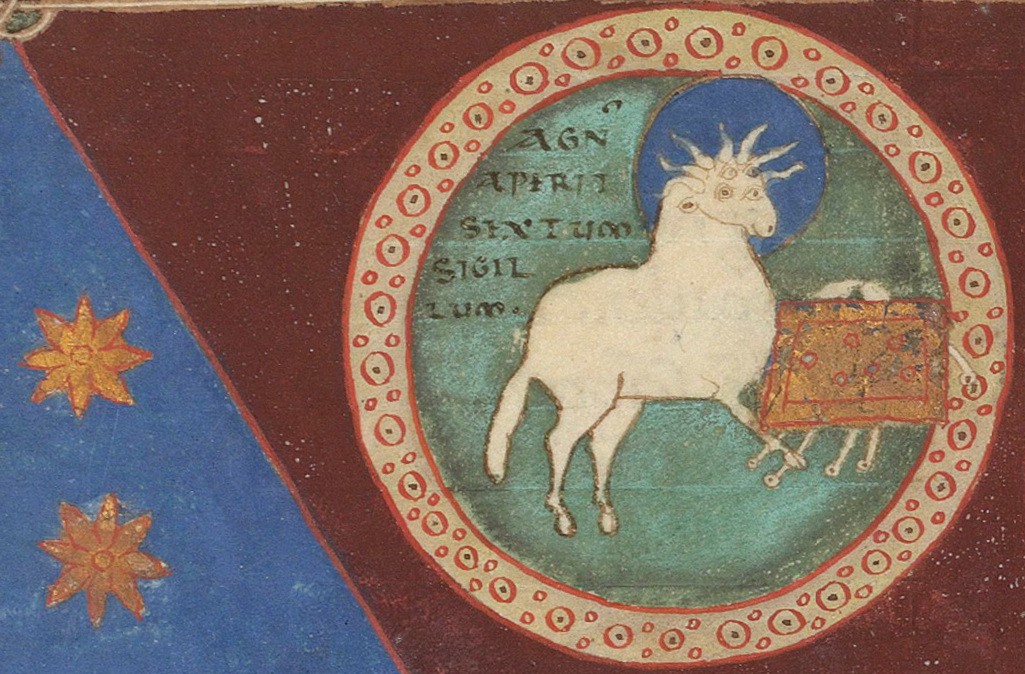
After 3.5 years of the revenge of the lambs, which based on Daniel again is the halfway point of the tribulation, the Beast enters the Temple of Jerusalem, forces the Jews to stop their own worship practices, and sets up “the abomination of desolation.” This is when worshipping the Beast or his image becomes mandatory and his mark becomes a condition for commerce, and everyone who has become a believer during the tribulation must, if they want to avoid eternity in the lake of fire, accept being beheaded rather than comply.
Then over the second half of the tribulation, angels blow the seven trumpets at and pour the seven bowls over whoever’s left, bringing more death, destruction, and, most memorably, the worst of all possible combinations in God’s animal body parts flip book, the locusts.
But this period comes to a close when Jesus returns with the army of Heaven and defeats the Beast, False Prophet, and Dragon and their human armies at the Battle of Armageddon, and starts the next phase of the End Times: his 1000-year reign.
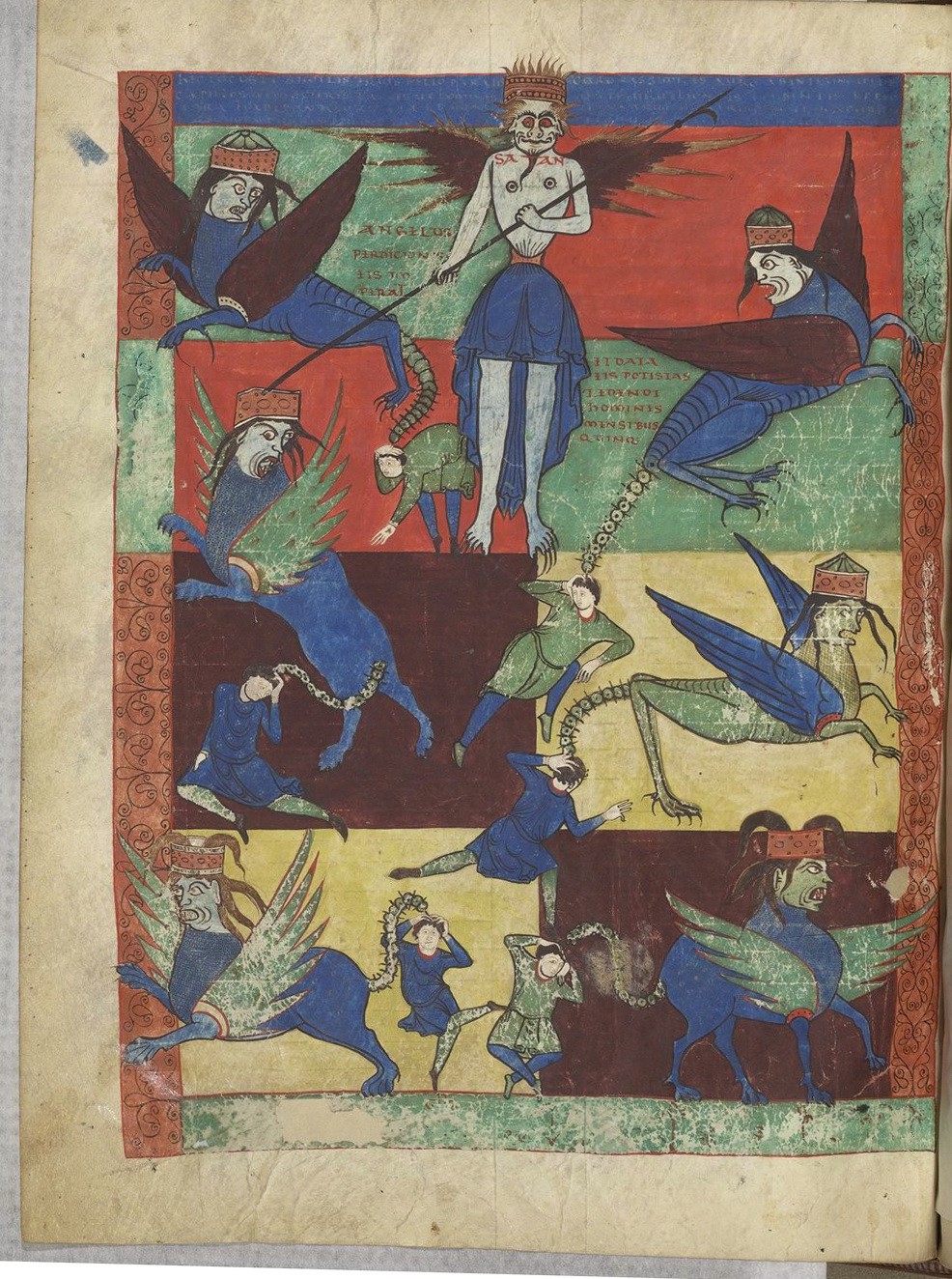
Everything else described in Revelation before the Battle of Armageddon fits into the tribulation timeline at various points as well; dispensationalism subscribes to the idea of Biblical literalism, which is exactly what it sounds like. But rather than expanding this section further I will just talk about these events when they come up in the popular media that I look at in Parts III, IV, V, and VI.
Okay, diagram time:
Tribulation timeline
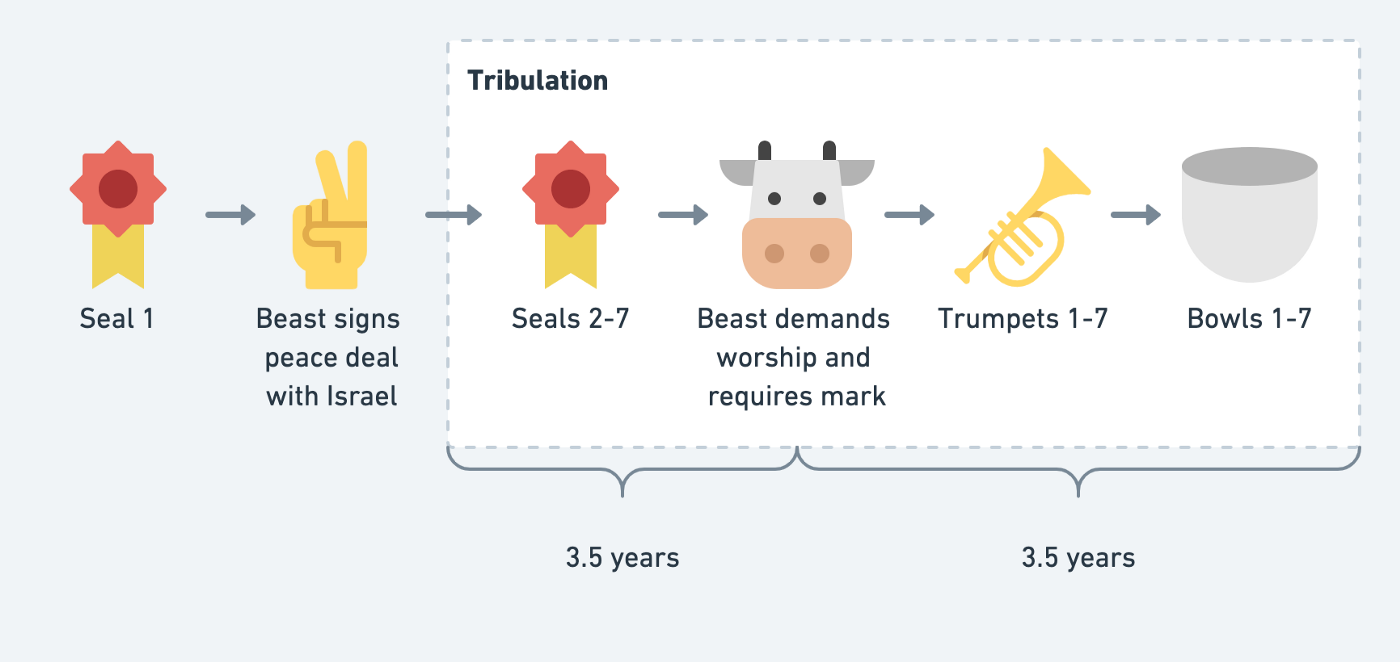
On that note, now I’ll move on to placing the rapture and the tribulation within the greater dispensationalist view of the End Times.
Timing
To start with, I’ll take a step back and introduce John Nelson Darby, who is considered the originator of dispensationalism. A former priest in the Anglican Church of Ireland, Darby traveled and spread his beliefs widely during the 19th century, including in the United States and Canada.

As part of a larger project of dividing history as represented by the Bible into different periods called “dispensations,” Darby advanced the radical idea that God had separate plans for two groups of people:
- the earthly people of Israel
- the heavenly Christian believers
He further claimed that God wouldn’t manage two peoples at once. I mean, sure, I can’t imagine playing two games of Age of Empires at the same time, but I am also not omnipotent and omnipresent.
Darby’s solution to his own problem was that the Christian believers had to be removed from the picture before the events of Revelation, which heavily involve the people of Israel.
As a result, he split the second coming of Jesus in two:
- Before the tribulation, Jesus comes for the believers, conveniently whisking them away with the rapture before all the horrors.
- After the tribulation, Jesus comes with the believers, who make up his holy army in the Battle of Armageddon.
So the whole dispensationalist End Times timeline looks like this:
End Times timeline

In fact, the longer name for dispensationalism is “pretribulational dispensational premillennialism”: the rapture happens before the tribulation and before the 1000-year reign, and this all takes place within the context of Darby’s concept of dispensations.
I’ve got to say, though, if I put on my Oliver Stone “who benefits” hat, I can’t help but wonder if Darby worked backwards from the premise “Christian believers like me shouldn’t have to face the tribulation” and came up with everything else in order to justify it.
So, next I’ll take on the obvious next question: who counts as a Christian believer and gets hoovered up?
Salvation
Before the rapture
With respect to who will be raptured, dispensationalism holds that being a Christian and a good person is not adequate. What matters most is accepting Jesus into your heart and surrendering yourself to his will.
A guide to starting your new life with Jesus that appears on a website associated with the late superstar minister and dispensationalist Billy Graham provides the most straightforward steps for salvation that I could find:

Clicking on Yes, I prayed the prayer takes you to a screen that says, “Congratulations on your decision! We would like to provide you with free online resources to help you grow in your relationship with Jesus Christ,” and asks for your contact information and whether you are male or female.
No, but I have a question takes you to a page with a different form to ask your question, and also an entry point to FAQ material that, in an unfortunate departure from the approach of the salvation guide, consists of tens of thousands of words assigned to fractally interlocking topics that are spread over three different sites, which is crying out to the librarians’ hierarchies in its need (even though every librarian is terrifying).

That said, if you decide, “yes, I do really want Jesus in charge,” and say the prayer, meaning you don’t need to look at the FAQ, done and dusted, right? For some, sure.
There are certainly those who are able to interpret the requirements for salvation that they encounter, no matter how abstract, in such a way that they feel confident they know what to do and don’t worry they are doing it wrong.
But even just looking at people who were raised with these beliefs, many felt starting at a very young age that however the route to salvation was described to them, they were uncertain about what following it meant in practice and whether at any given point they were on the right track, so stories like this one are common:
Not a joke for once, but given the next section, I’m really curious what form accepting Jesus took at age 4.
Indeed, as we’ll see in more individual experiences and in pop culture narratives in Parts III, IV, V, and VI, according to many with dispensationalist beliefs, you have to not just think that you have let Jesus take the wheel, but must have actually done it in some ineffable way that it’s entirely possible to come up short on.

The consequences of not getting it right are as clear as the requirements are murky: fictional characters who, no matter how devout they seem, just thought they had committed to Jesus get left behind.
So, the idea that the rapture could come at any time, combined with the ambiguity about whether you will qualify, not to mention the unthinkable horrors to come if you don’t, led many people who were brought up with or converted to dispensationalist beliefs to experience significant anxiety, paranoia, depression, and religious scrupulosity, which is a specific form of OCD.
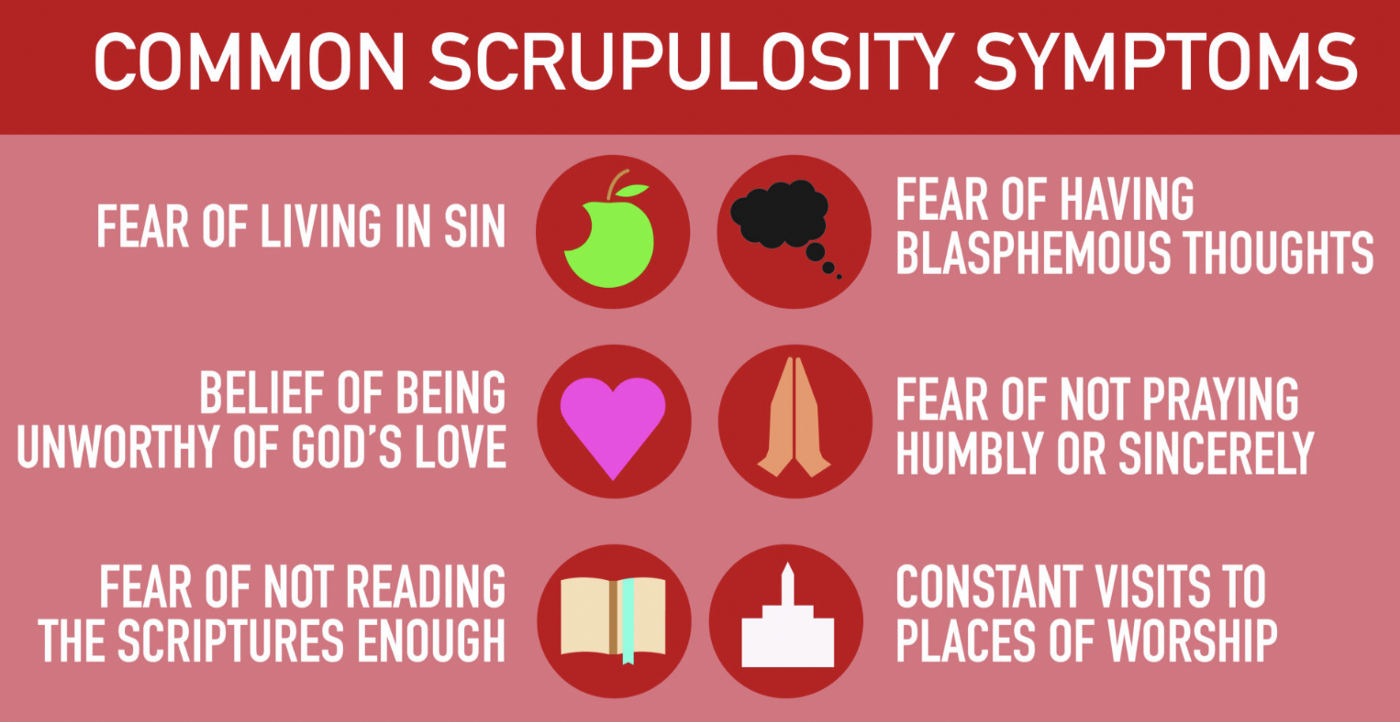
But again, not everyone has that kind of experience. Many believers are sure they’ll get raptured, and I presume there are even some who have decided they can’t know for sure and will face the tribulation with grace if it’s God’s will that they do.
As I said before, I’ll explore more of these personal experiences in the next post, but first I’ll tackle a couple more topics related to who gets raptured.
There’s actually another wrinkle in how we conceptualize the rapture when it comes to children: if salvation depends on affirmatively asking for forgiveness and accepting Jesus into your heart, what happens to those who are incapable of doing so, like very small children and people with developmental disabilities?
The most common belief, which does not show up in the Bible but has been “logically inferred,” is that children before an age cut-off called “the age of accountability” automatically qualify for the rapture. I’ve mostly seen the cut-off being around age 3 or 4, but some put it as high as 13. As well as differing viewpoints on the upper bound, there’s also disagreement on the lower one, which, well, I think you can see where I’m going here.
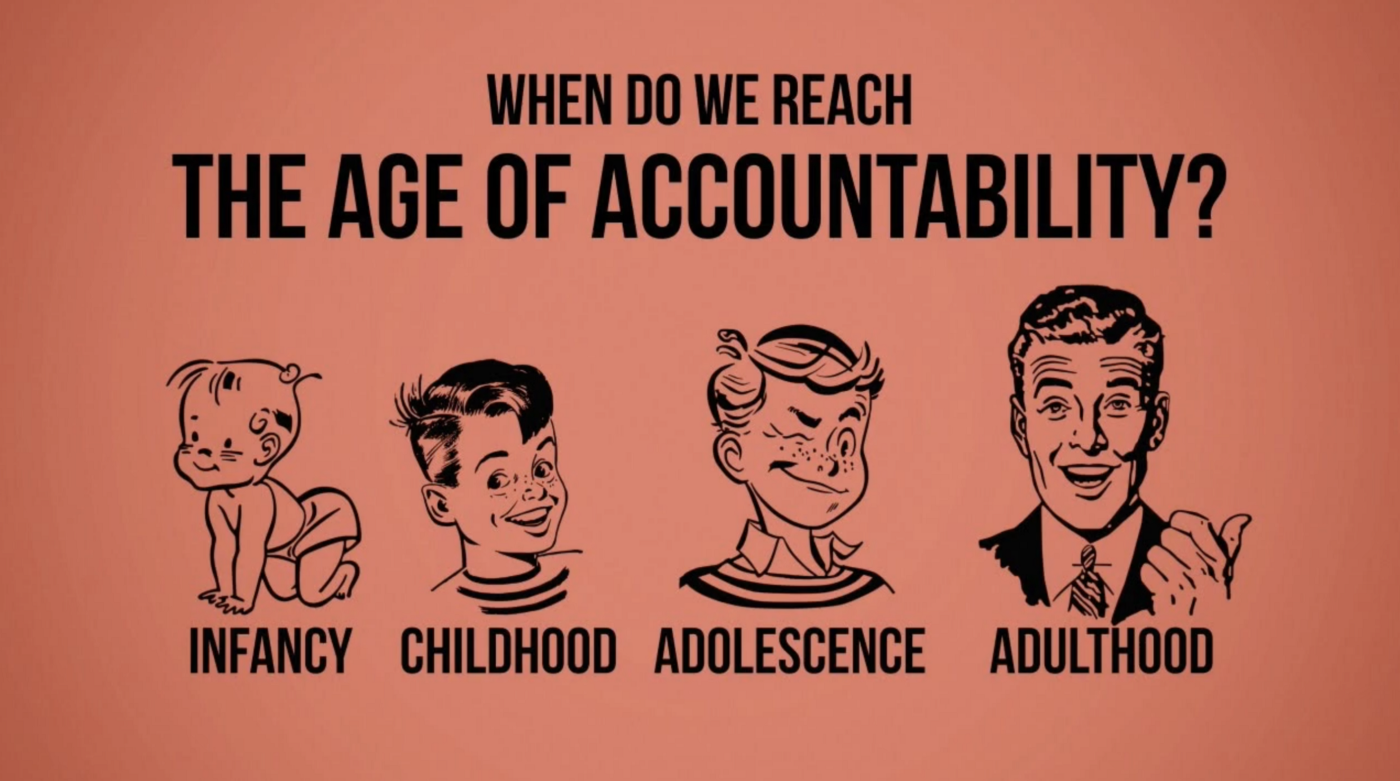
Indeed, as contemporary dispensationalism sees life as beginning at conception, many believe that “unborn children” would also get raptured. Another way of putting this, of course, is that every pregnant person who doesn’t qualify for the rapture would have their pregnancy terminated without consent.
What exactly happens to all of this fetal matter in various stages of development once it gets to Heaven, especially given the dispensationalist belief that people regain physical bodies in the afterlife, raises questions touching on what feels like every branch of natural and social science as well as philosophy—just like everything else about the afterlife, I guess—so let’s just move on.
Maybe one day, if I ever feel like thinking about religion again after I’m done with this series, I’ll explore it.
After the rapture
Dispensationalist beliefs specifically say that any Jewish Israelis who truly accept Jesus into their hearts after the rapture, as long as they don’t do anything to disqualify themselves, will be counted as believers when the Last Judgement comes.
But for everyone else, there appear to be two main positions on who will be eligible for salvation, even if they get conversion right:
- Everyone (easy enough)
- Only those who have heard and understood the correct beliefs for the first time (room for ambiguity again)
The intent of the second perspective is clear, however: if someone makes an adequately informed decision to reject the word of God the first time they hear it, before or after the rapture, it condemns them to the eternal flames, no matter what they do after.
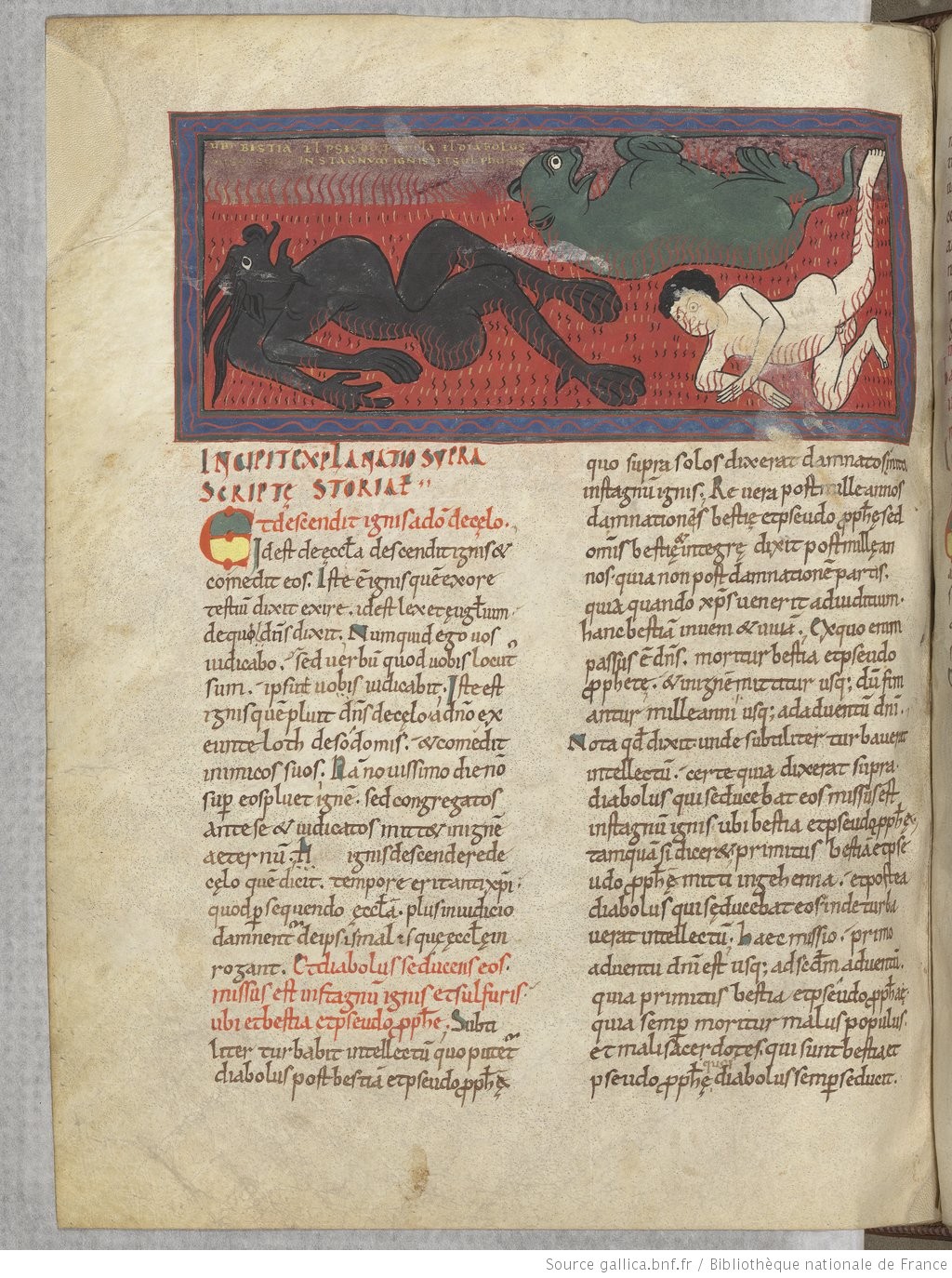
I’ll discuss both perspectives further when I get to talking about the tribulation in popular media, as this question is one of the main preoccupations of one of the film series I will focus on.
So, before I go, a reminder that in Parts III, IV, V, and VI, I’ll look more at the individual experiences of people with dispensationalist beliefs as well as diving headfirst into pop culture based on dispensationalism. And in Part VII, I’ll explore signs that the End Times are coming and the consequences of adopting that worldview. So stay tuned! The next instalment will come like a thief in the night.
Finally I’ll continue the pattern and close this piece off with a song I like. This is “Do You Believe in Rapture?” by Sonic Youth, from 2006.
Subscribe to The Golden Age of Apocalypse
Get the latest posts delivered right to your inbox
